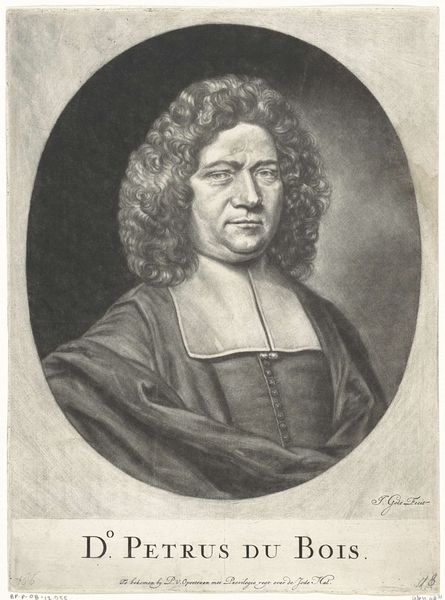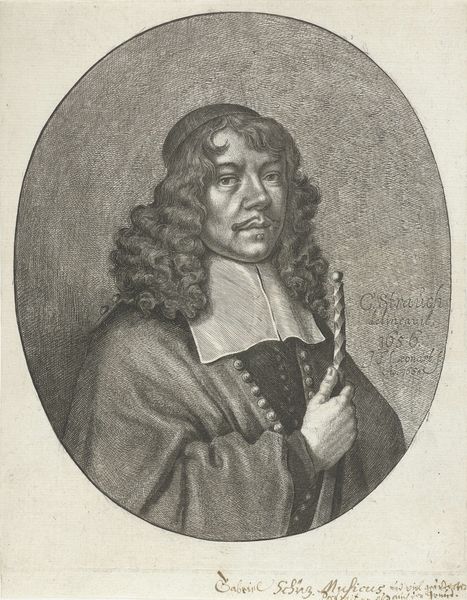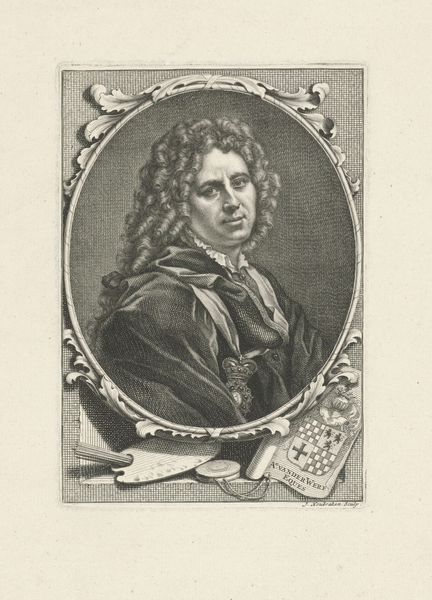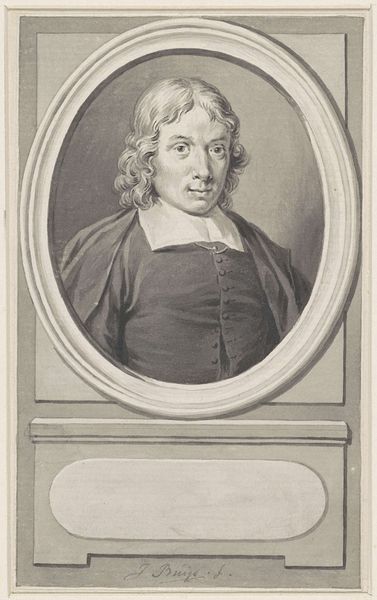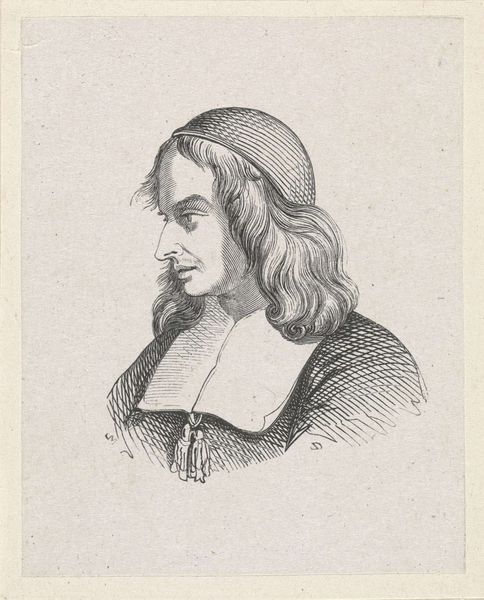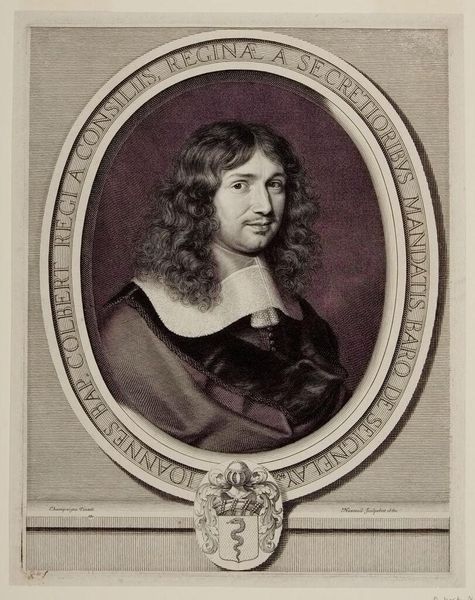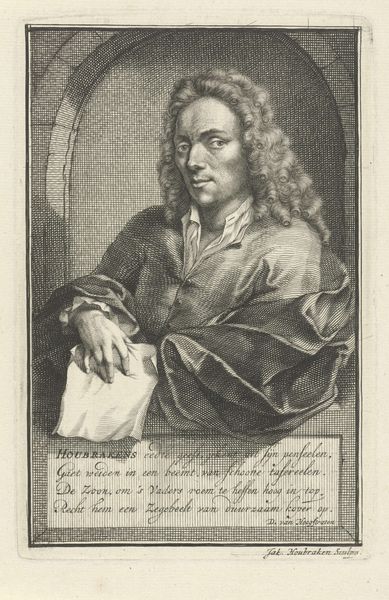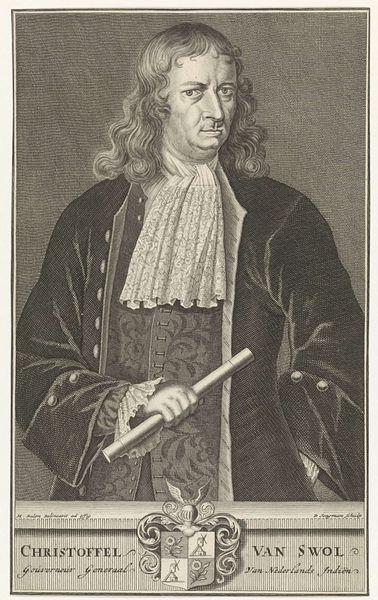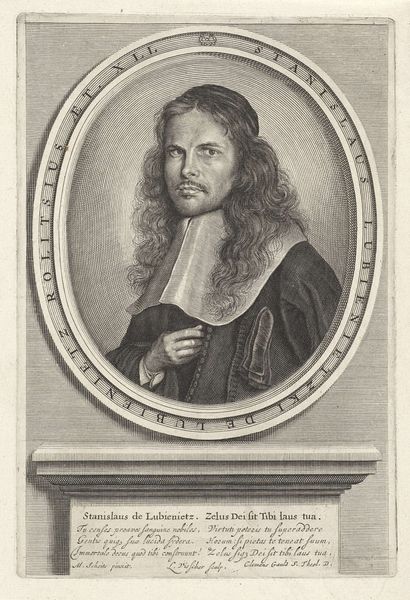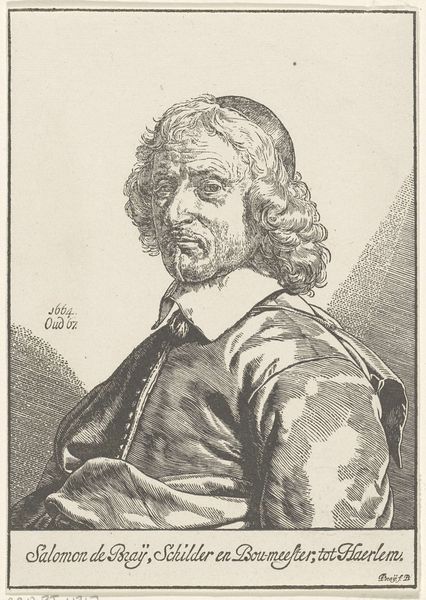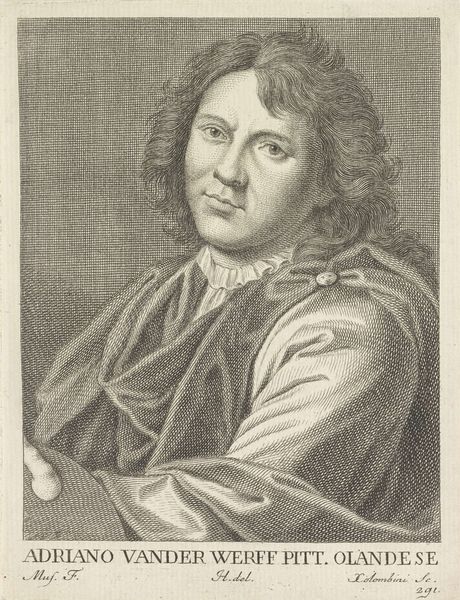
Dimensions: height 177 mm, width 138 mm
Copyright: Rijks Museum: Open Domain
Curator: This engraving, created sometime between 1841 and 1874, depicts a "Portret van Jan Havicksz. Steen." Editor: He looks rather… self-assured. There's something about the angle and the slight smirk that suggests a confident individual, even arrogant perhaps. Curator: Willem Hendrik Stam created this image, capturing the likeness of Steen in the Dutch Golden Age tradition. Note how the lines give such volume, especially in his clothing. It feels like Baroque portraiture distilled into line art. Editor: The line work does convey an almost tactile sense of the fabrics and forms. I wonder what Stam sought to convey by re-presenting Jan Steen—another artist—so long after Steen's own lifetime. Was this an act of reverence? Or perhaps a comment on the artistic lineage, placing Steen within a historical context? Curator: Considering the proliferation of portraiture in the Dutch Golden Age, such an image could serve a mnemonic function, preserving a type, rather than offering likeness. A stand-in to embody artistry. Editor: The choice of black and white engraving lends it a timeless quality, further distancing it from any specific moment in history. Perhaps Stam wanted to speak to enduring characteristics he perceived as important across time. The figure's social status feels pronounced too, reinforcing notions of access and power within artmaking across history. Curator: The detail in the face draws the eye; that slight upturn of the mouth really personalizes an otherwise somewhat formulaic style of portraiture. What emotions, I wonder, are embedded within the artistic persona that Steen has come to embody? Editor: For me, there is an underlying sense of exclusion in images of wealthy, white men in art. What historical narratives are amplified and centered versus those suppressed, erased? Seeing this image today invites reflection on visibility and voice—and whose stories we tell, or don’t. Curator: It certainly stimulates conversation around not only Steen's identity, but Stam's purposes, too. Visual language creates complex conversations, shifting as time marches forward. Editor: Absolutely, and engaging with the imagery of the past allows us to challenge the norms of the present.
Comments
No comments
Be the first to comment and join the conversation on the ultimate creative platform.
